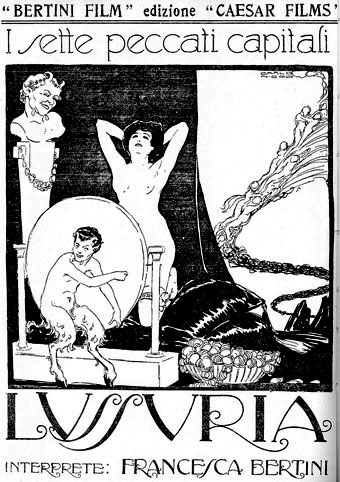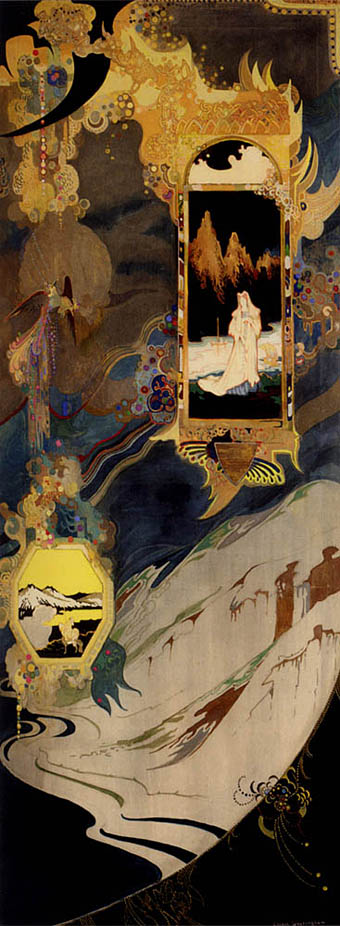The lost boys: Brian Epstein, Joe Orton and Joe Meek
John Savage on three men for whom gay liberation came too late.
Lussuria, Invidia, Superbia
Or Lust (1919), Envy (1919) and Pride (1918). Very Beardsley-esque posters by Carlo Nicco for a series of Italian films from the silent era starring Francesca Bertini. Doubtless the prolific Ms. Bertini’s demonstrations of the Seven Deadly Sins inspired similar promotional artwork for the other films in the series but these are the only ones visible from this Flickr collection of Italian cinema memorabilia. As with Alla Nazimova’s Salomé (and Gabriel D’Annunzio’s excessive Salammbô-esque epic, Cabiria), this confirms again that fin de siècle Decadence lived on in the early days of cinema, having been banished (for a time) from the worlds of art and literature.
Via Fabulon. (Thanks Thom!)
East of Paracelsus
East of Paracelsus, a view from Apollo 15 (1971).
One of a number of photographs from the Apollo missions being taken out of cold storage in Arizona and scanned at very high resolution, should you need a 1.3 GB image of the lunar surface. I was totally obsessed with the Apollo missions when I was a kid so I’m looking forward to more of this kind of imagery, especially at super-high res.
For other Moon pictures, Flickr is gradually accumulating shots of this week’s lunar eclipse.
The art of George Sheringham, 1884–1937
Baptism of Dylan, Son of the Wave from The Cauldron of Anwn (c. 1902).
About the artist:
George Sheringham was born in London. He studied art first at the Slade School (1899–1901) before leaving for Paris, where he studied from 1904–1906. Chiefly known as a designer of stage sets and decorative artist he was also illustrator of works by Arthur Conan Doyle and Max Beerbohm. He was the author of Drawing in Pen and Pencil (1922) and Design in the Theatre (with James Laver, 1927). An invalid from 1932, he continued to paint flowers until his death.
About the work:
This striking series of paintings were commissioned by the 8th Lord Howard de Walden (Baron Seaford) to illustrate his Celtic poem, The Cauldron of Anwn. It has been suggested that they were part of a decorative sceme for de Walden and it is therefore likely that they were part of his remodelling on the interior of Seaford House in Belgravia which he undertook from 1902 onwards. The modifications at Seaford House included the panelling of the dining room and installation of an onyx staircase and frieze carved from marble imported from South America. No expense was spared and it is said that to ensure a supply of the right kind of marble, Baron Seaford bought the mine.
The series of The Cauldron of Anwyn reflects Sheringham’s interest in oriental ornamentation and also reflects modern approaches to book illustration. A close comparison can be drawn between Sheringham’s work and that of Edmund Dulac and Sheringham’s work is also suggestive of a more exotic continental approach to decoration. Sheringham had studied at the Slade School between 1899 and 1901 and in Paris between 1904 and 1906. The qualities of his work were recognised in Paris before they were in Britain and his first exhibits were at the Paris Salon. He was born and lived in London all his life and became well known as a decorative artist, applying his talents to costume and scenery design for various theatrical productions. He also illustrated many books including The Happy Hypocrite and Design in Theatre and this interest in intricate decoration was transposed into his interior design work.
• The Cauldron of Anwyn at ARC.
Elsewhere on { feuilleton }
• The illustrators archive
Cormac wins another prize
Cormac wins another prize
The Road is awarded the James Tait Black Memorial Prize.



